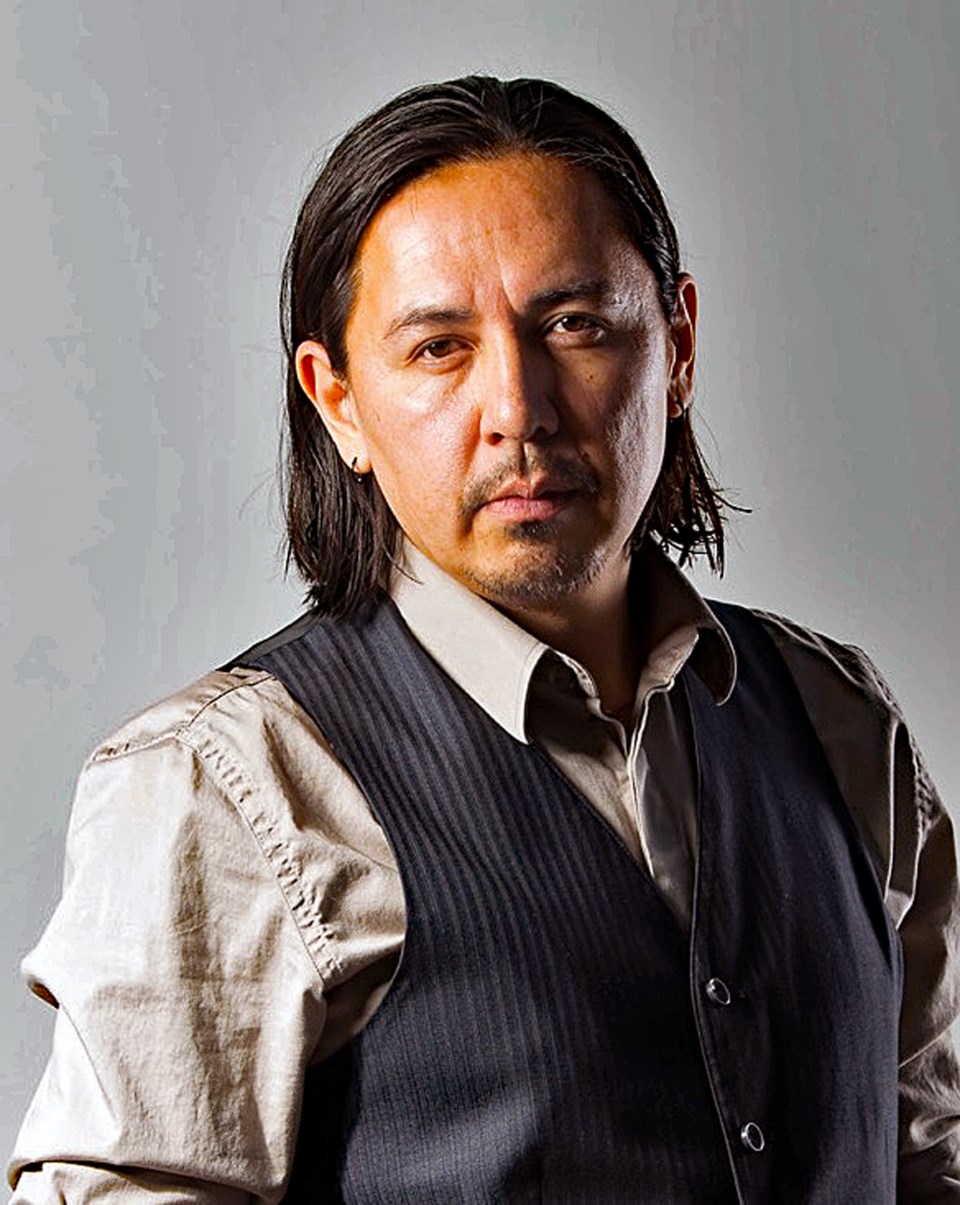NORTH BATTLEFORD — When Curtis Peeteetuce was asked in 2005 to create a non-verbal storytelling performance for the Native Theatre Company, he eagerly accepted. But his plan to feature a Saskatchewan powwow dancer quickly fell apart.
“Unfortunately, it was summertime, and all the dancers were busy. They were all out on the powwow trail, dancing everywhere across Saskatchewan. I couldn’t find anyone.”
Knowing the mistake could cost him his job, Peeteetuce decided to spend the three days before the event mixing various CDs and creating his own story.
His non-verbal story, Time Immemorial, spans Indigenous history and was the focus of Peeteetuce’s evening of storytelling at the North Battleford library Feb. 16 for Aboriginal Storyteller’s Month.
“When I think of immemorial, I think of a story. And for me, that is the story of Indigenous men and our experience here since time began.”
In the eight-and-a-half-minute interpretive dance, Peeteetuce paid tribute to the Indigenous men in his life and their stories, with the performance tracing the evolution of Indigenous identity from pre-contact to contact, post-contact and, finally, revitalization.
“In this day and age, it’s so important, the final message being to return full circle to who we are, our identity.”
And as a Cree storyteller, dancer, artist and Aboriginal student achievement co-ordinator working in Saskatoon, when Peeteetuce talks about his identity and his home community of Beardy’s and Okemasis First Nation, he’s not really talking about Indigenous identity.
“I think it’s more important to talk more or less about our personal identities. And when I talk about storytelling, I talk about the first story.”
No, not God. Not Adam and Eve or the first drum beat. The first story, in Peeteetuce’s mind, is your story.
“A lot of young people where I work don’t know who they are. I ask what the last names mean, and they say Cree and Indigenous, but what does it really mean? This generation knows nothing of who they are.
“My last name is Peeteetuce, and my first story is about my mom, my grandparents and, of course, the nurse and the doctor who were there. I consider the people who were there when I was brought into this place, onto this big rock called Mother Earth, my first story.”
Peeteetuce spent years wondering what his name meant before asking his kookum while sitting in the back of his grandparents’ old station wagon. She told him it meant bear paws, but that doesn’t quite work in Cree.
Fast-forward many years, and Peeteetuce is working at the theatre, and he’s telling the story of his name to his friends who worked at the francophone theatre company, who said to him that it sounded like, “petit ours,” or little bear.
“Am I French?” He asked, recounting himself looking at himself in the front-facing camera on his phone after rushing to the store and reading the French-side of a box of bear paw cookies.
Peeteetuce believes the Indian agent who came to their community didn’t speak English. When he was taking the names of the families, he likely misunderstood them, and little bear, or paws, might have turned into Peeteetuce.
“What is in a name? Especially on this territory, Treaty 6 Territory. A name like Peeteetuce. There is a whole world of knowledge out there, and it begs the question, what’s in a name? What’s the story of your name?”
Peeteetuce believes that it’s a part of your foundation.
“You stand strong. You can walk without holding your head down, without being shy, scared or awkward ... that knowledge base of who you are validates your being and story and validates your place on this planet.”
And storytelling plays an enormous role in Indigenous culture.
“We have four seasons here in our homeland, spring, summer, fall and winter. Spring and summer and fall are filled with activities, the animals are coming out, the ice breaks, snow melts and the plants grow,” Peeteetuce said.
“Plants flourish in the summertime and prepare to die in the fall. There is nothing but silence after the snow falls.
“Winter is so quiet. Sometimes it’s depressing ... that’s when it’s our time to tell stories. We’ve taken spring, summer and fall to watch, listen and learn. When the snow stays, that’s when storytelling season begins. It’s our turn to tell the stories,” Peeteetuce said.
“... because culture shifts, we are now telling stories year-round, rather than waiting,” Peeteetuce said. He said he believes it’s important to tell them now that youth are listening and ready to soak up these stories like sponges.
And everyone tells stories, Peeteetuce reminded the room.
“In some way, form or fashion stories are foundations. It’s universal because of that benign middle and end, and we do it every day, all the time. Storytelling belongs to all of us.”
When you include your own culture, stories and history, you make them your own.
“That’s the nature of stories, and it connects us to ourselves, our place, space, etc., and connects us together ... a story exists where you want it to exist. A story can exist anywhere, as almost anything. It’s almost that simple.”




